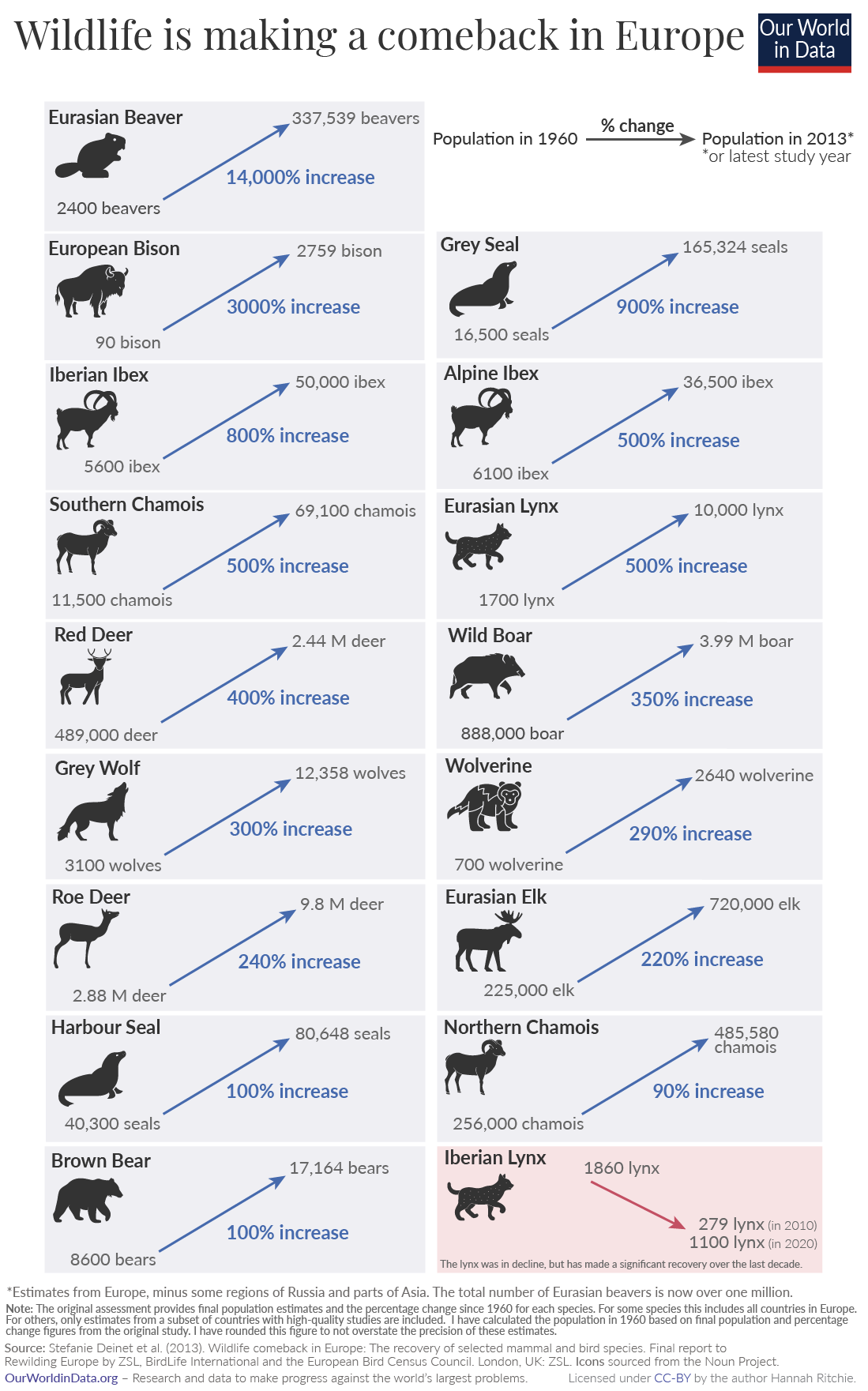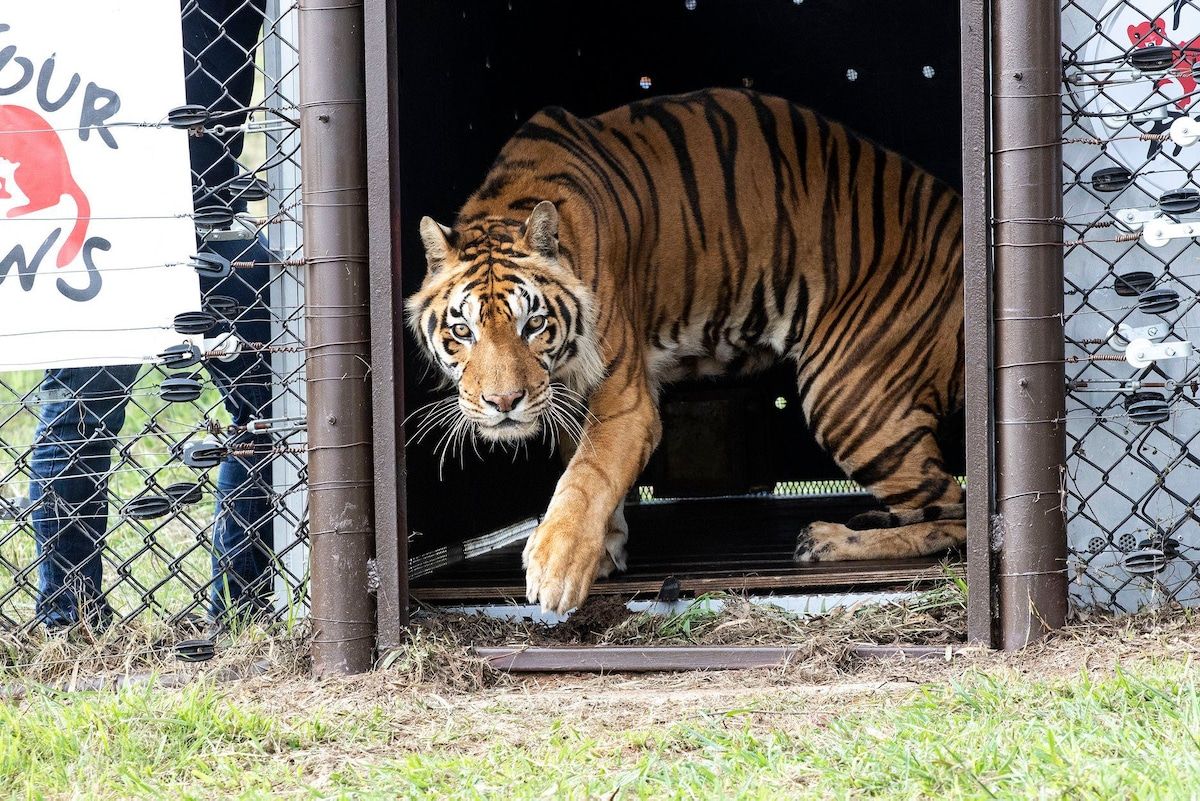
🐂 European wildlife sees strong comeback
Many large mammals have increased by hundreds and in some cases thousands of percent in the last 60 years.
Share this story!
Aggressive hunting and shrinking habitats have driven many large mammals in Europe to the brink of extinction. At least that was the case in the 1960s, but since then many species have made a great comeback.
An analysis from Our World In Data shows, for example, that the European bison has gone from 90 individuals 60 years ago to over 2,700 today.
At the same time, the number of beavers in Europe has increased from 2,400 to almost 340,000. Wolverines have increased by 290 percent to 2,640 individuals and lynx have gone from 1,700 to 10,000 animals.
The reason for the strong recovery for many large mammals since 1960 is that hunting has been regulated in many countries and their habitats have become larger.

The fact that many species have been given more space to live on is partly due to the fact that nature reserves have become more numerous and larger. But changes in agriculture also play an important role.
The cultivated area in many countries has decreased since the 1960s. It's reverted to its wild state and thus given the animals more space to live on even outside the nature reserves. More efficient cultivation methods have meant that today we produce more food in Europe than in 1960, despite the fact that we use less land.
Reintroducing animals where they previously lived in the wild, but have been exterminated in recent decades has also been very successful in some cases. The best example of this is the beaver, which has been reintroduced in 25 countries. This has led to the beaver population in Europe increasing by 14,000 percent in 60 years.



By becoming a premium supporter, you help in the creation and sharing of fact-based optimistic news all over the world.



